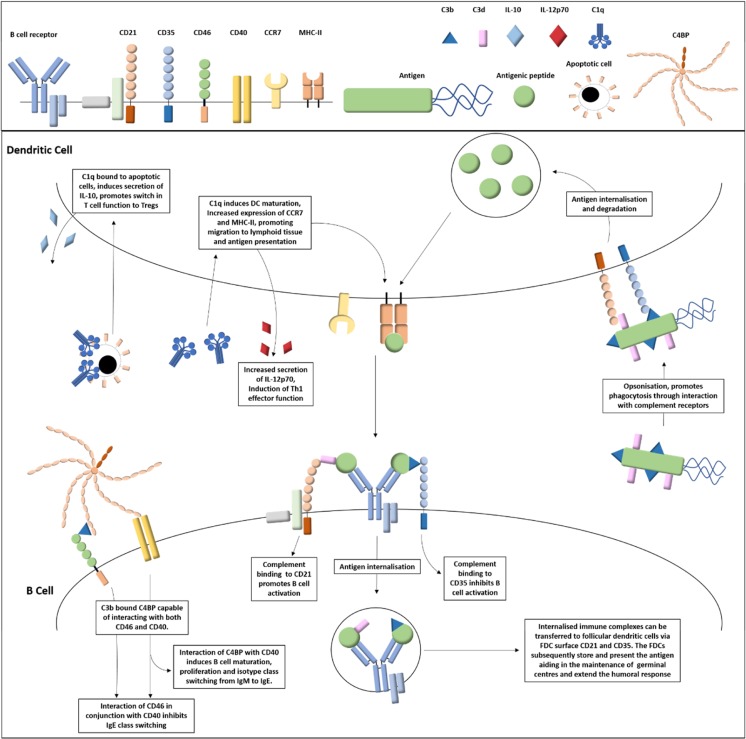Fig. 1.
Complement regulation of dendritic and B cell functions. The interaction of complement component C1q with dendritic C1qR results in differential responses dependent on its ligand. C1q bound to microbial surfaces results in DC maturation, increased expression of MHC-II and CCR7, and increased secretion of IL-12p70 resulting in improved ability to present antigen, migration towards the lymphoid tissue and promotion of Th1 effector cell differentiation, respectively. However, C1q bound to apoptotic cells results in secretion of the anti-inflammatory cytokine IL-10 as opposed to IL-12p70 resulting in activation of regulatory T cells. C3b and C3d complement coated antigen is bound by antigen presenting cell surface CD21 and CD35 complement receptors, assisting in antigen uptake. The internalized antigen is degraded to antigenic peptide and presented on the surface MHC-II. B cell activation is regulated by complement C3d or C3b binding to cell surface CD21 or CD35 resulting in either a reduction in activation threshold or an inhibition of activation, respectively. Complement component C4BP interacts with a variety of ligands including complement C3b and B cell surface CD40. Interaction of C4BP with CD40 alone induces B cell activation, proliferation, and antibody class switching from IgM to IgE. However, C3b bound C4BP can bridge interactions between CD46 and CD40 which results in inhibition of CD40 mediated antibody class switching

